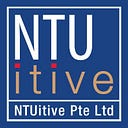Today, we have Dickson sharing with us his thoughts on the aspects of cryptocurrencies that are less discussed.
Cryptocurrencies. Blockchain. Decentralisation. Really??
When asked “What is Bitcoin?” or “What are cryptocurrencies?”, one keyword that will always be mentioned in the same sentence is the word ‘decentralisation’. In the blockchain world, many take pride in the fact that blockchain is decentralised, and there is no one central party having full control or authority over the system/network. However, is this truly the case?
Theoretically, on a blockchain network such as Bitcoin, every node has a copy of the ledger and transactions can only be successfully added onto the blockchain via consensus.
According to Satoshi Nakamoto’s vision, anyone with a CPU and internet connection can participate and have a say in governing the network, based on a one-CPU-one vote concept.
You might be wondering…Who is Satoshi Nakamoto? He is the most enigmatic character in cryptocurrency. To date, it is unclear if the name refers to a single person or a group of people. What is known is that Satoshi Nakamoto published a paper in 2008 that jumpstarted the development of cryptocurrency.
However, Dickson shares with us that from his perspective, things are not exactly panning out the way that it was envisioned. It might be true that blockchain may have allowed us to distance ourselves from the stranglehold of the central government and central banks, but the major population is still under the control of the rich and powerful.
This begs the question: who are the ones running the nodes and supporting the network?
Source: https://www.blockchain.com/charts/pools
Dickson also goes on to shares his insights on the hashrate that is often overlooked. If we look at the hashrate distribution on Bitcoin, we can see that with AntPool, Poolin, F2Pool, and ViaBTC combined, they account for over 50% of the network’s hashrate. With their combined effort, they have the influence to dictate the future of the network. This looks like a form of centralisation as compared to decentralisation.
Apart from hashrate mining, another perspective is in terms of Bitcoin holdings.
Source: https://bitinfocharts.com/top-100-richest-bitcoin-addresses.html
From the table above, we can see that the top 0.04% of addresses account for 63.08% of Bitcoin. Some may argue that these addresses could be owned by central exchanges or organisations. However, this argument still does not dismiss the fact that the bulk of Bitcoin is held in the hands of the minority, and these whales, as how the cryptocurrency world terms them, have the power/influence to move markets at their disposal.
In today’s world, the act of centralisation seems to be very much disguised under the facade of democracy and decentralisation.
Dickson’s article can be found here.
